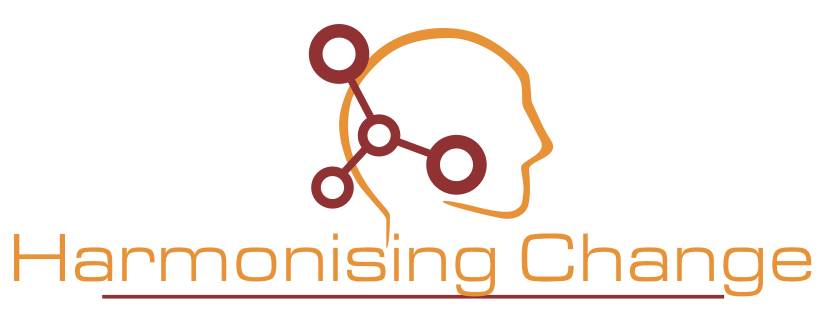
Embracing Transformation: A Guide to the Satir Change Management Model
In the ever-evolving landscape of organisational development, few models have proven as insightful and enduring as the Satir Change Management Model. Developed by Virginia Satir, a pioneering figure in family therapy, this model has transcended its origins to become a powerful tool for understanding and navigating organisational change.
Virginia Satir’s work in family therapy revealed universal patterns in how individuals and systems respond to change. These observations led to the creation of the Satir Change Management Model, which outlines five distinct stages that individuals and organisations typically experience during periods of transformation: Late Status Quo, Resistance, Chaos, Integration, and New Status Quo.
In this blog post, we’ll explore each stage of the Satir model, discussing its characteristics, challenges, and opportunities. We’ll also provide practical strategies for leaders to guide their teams through each phase, illustrated with real-world examples of organisations that have successfully navigated these waters of change.
Late Status Quo: The Calm Before the Storm
The Late Status Quo is the phase of relative stability that exists before change begins. It’s the familiar environment where routines, roles, and expectations are well understood. While this phase may seem like a state of comfort, it can also be one of complacency.
Signs that an organisation is in the Late Status Quo include:
- A focus on maintaining the status quo rather than driving innovation.
- Resistance to new ideas or processes.
- Growing inefficiencies or frustrations that are accepted as ‘the way things are.’
Organisations often realise they are in this phase when they encounter external pressures—market shifts, customer demands, or technological advances—that demand change. Recognising the need for transformation is the first step towards progress.
Leaders must be attuned to signs that indicate the organisation is in Late Status Quo:
- Stagnant growth or declining profits
- Increasing customer complaints or decreasing satisfaction
- High employee turnover or low engagement
- Falling behind competitors in innovation or market share
Triggers that propel an organisation out of Late Status Quo can include:
- Market disruptions or new competition
- Technological advancements
- Changes in leadership or ownership
- Regulatory changes or economic shifts
Real-World Example
Kodak’s failure to recognize the shift from film to digital photography is a classic example of the dangers of remaining in Late Status Quo. In contrast, Netflix’s decision to shift from DVD rentals to streaming services demonstrates a successful recognition of Late Status Quo and proactive initiation of change.
Resistance: The Natural Response to Change
When change is introduced, resistance is a natural response. For many individuals, change disrupts routines and challenges comfort zones, triggering emotional, intellectual, and behavioural resistance. Resistance can manifest in various ways—questioning leadership decisions, clinging to old processes, or even passive-aggressive behaviours like procrastination.
To manage resistance effectively:
- Acknowledge emotions: Recognising and validating the concerns of your team is key. People need to feel heard.
- Communicate the vision: Explain the reasons behind the change and its long-term benefits, reducing fear and uncertainty.
- Provide support: Offer training, resources, and emotional support to make the transition less daunting.
. It can manifest in various forms:
- Emotional: Fear, anxiety, or anger about the impending change
- Intellectual: Questioning the need for or logic behind the change
- Behavioral: Active or passive non-compliance with new processes
Leaders can effectively address resistance by:
- Acknowledging and validating concerns
- Providing clear, honest communication about the reasons for change
- Involving employees in the change process
- Offering support and resources to help individuals adapt
Overcoming Resistance: A Success Story
When IBM shifted its focus from hardware to services and cloud computing, it faced significant resistance. The company overcame this by implementing a comprehensive communication strategy, providing extensive retraining programs, and involving employees in shaping the new direction. This approach helped transform resistance into engagement and support for the change initiative.
Chaos: Navigating the Storm
The Chaos stage is the most difficult part of the change journey. During this phase, the old ways of working no longer apply, but the new processes aren’t yet established, leading to confusion, frustration, and uncertainty. Individuals may feel disoriented or overwhelmed, and productivity may dip as teams adjust to unfamiliar conditions.
Navigating the Chaos stage requires:
- Consistent communication: Ensure that everyone is informed about progress, timelines, and expectations. Transparency reduces anxiety
- Adaptive leadership: Leaders must be flexible and able to make quick decisions, providing reassurance and direction when things feel unstable.
- Encouraging experimentation: Give teams the freedom to test new ideas and approaches, fostering innovation and engagement.
Leaders can help their organisations weather the storm of chaos by:
- Maintaining clear and frequent communication
- Providing a strong vision and direction
- Encouraging experimentation and learning from failures
- Offering emotional support and resources
Thriving in Chaos: An Example
During its transformation from a traditional software company to a cloud services provider, Microsoft under Satya Nadella’s leadership embraced the chaos stage. By fostering a growth mindset, encouraging innovation, and maintaining a clear vision, Microsoft was able to navigate through the turbulence and emerge stronger.
Integration: Making Sense of the New
As the turbulence of chaos settles, the Integration stage marks the point where individuals and teams begin to make sense of the changes. During this phase, people adapt to new roles, processes, and systems. The focus shifts from surviving change to integrating it into daily operations.
To support successful integration:
- Foster collaboration: Encourage teams to work together, share experiences, and support one another in mastering the new ways of working.
- Reinforce learning: Provide continuous training and feedback to ensure employees feel confident in applying new processes.
- Celebrate small wins: Recognise and celebrate milestones, no matter how small, to boost morale and show progress.
During the Integration stage, organisations begin to:
- Make sense of the changes
- Develop new skills and processes
- Rebuild team cohesion and trust
- See initial positive results from the change efforts
Successful Integration in Action
Salesforce’s acquisition of Slack demonstrates effective integration. By maintaining Slack’s culture and autonomy while integrating it into the broader Salesforce ecosystem, the company successfully blended two distinct organisations, leveraging their strengths to create a more powerful whole.
New Status Quo: Establishing a New Normal
The New Status Quo is the final stage in the Satir Change Model, representing a point where stability returns, but with new processes, systems, and ways of thinking. Individuals have fully adapted to the change, and the organisation operates at a higher level of efficiency and performance.
Indicators of the New Status Quo include:
- A sense of normalcy and routine around the new changes.
- Improved performance and morale as employees embrace new ways of working.
- A forward-thinking mindset, where innovation becomes part of the culture.
To ensure the sustainability of changes, leaders should:
- Institutionalise new processes and behaviours
- Continue to communicate the benefits of the changes
- Recognize and reward individuals who embody the new ways of working
- Remain vigilant for signs of regression or new needs for change
A New Status Quo Success Story
Adobe’s transition from a traditional software sales model to a cloud-based subscription service exemplifies a successful move to a New Status Quo. By fully embracing the new business model, continuously innovating, and maintaining a customer-centric approach, Adobe has established a new, more profitable, and sustainable way of operating.
Applying Satir’s Model in Change Leadership
The Satir Change Management Model emphasises the emotional and psychological aspects of change. Leaders who adopt this model in their change management strategies will benefit from its focus on empathy, communication, and adaptability.
Key leadership strategies include:
- Empathy: Understand that each stage represents a different emotional response, and tailor your leadership approach accordingly.
- Communication: Maintain open and transparent communication throughout the entire process.
- Adaptability: Be flexible and ready to adjust plans based on feedback and the unique challenges your team faces.
By recognising the emotional stages of change, leaders can guide their teams more effectively, helping them to not only cope with but embrace transformation.
One common misconception about the Satir Model is that it’s strictly linear. In reality, these stages can overlap, and individuals may move back and forth between them. Additionally, it’s important to recognise that people experience each stage at different speeds and intensities.
The Satir Model is a flexible guide, not a rigid process. Embrace the fluidity of change and remain responsive to the evolving needs of your team.
The Satir Change Management Model provides invaluable insights into the emotional and psychological journey of organisational change. By understanding and addressing each stage – Late Status Quo, Resistance, Chaos, Integration, and New Status Quo – leaders can guide their organisations through transformations with greater empathy, effectiveness, and resilience.
By fostering empathy, open communication, and adaptability, organisations can move through these stages successfully, emerging stronger and more resilient in the face of future challenges.
Contact Harmonising Change here.



